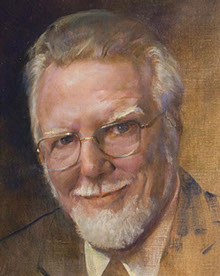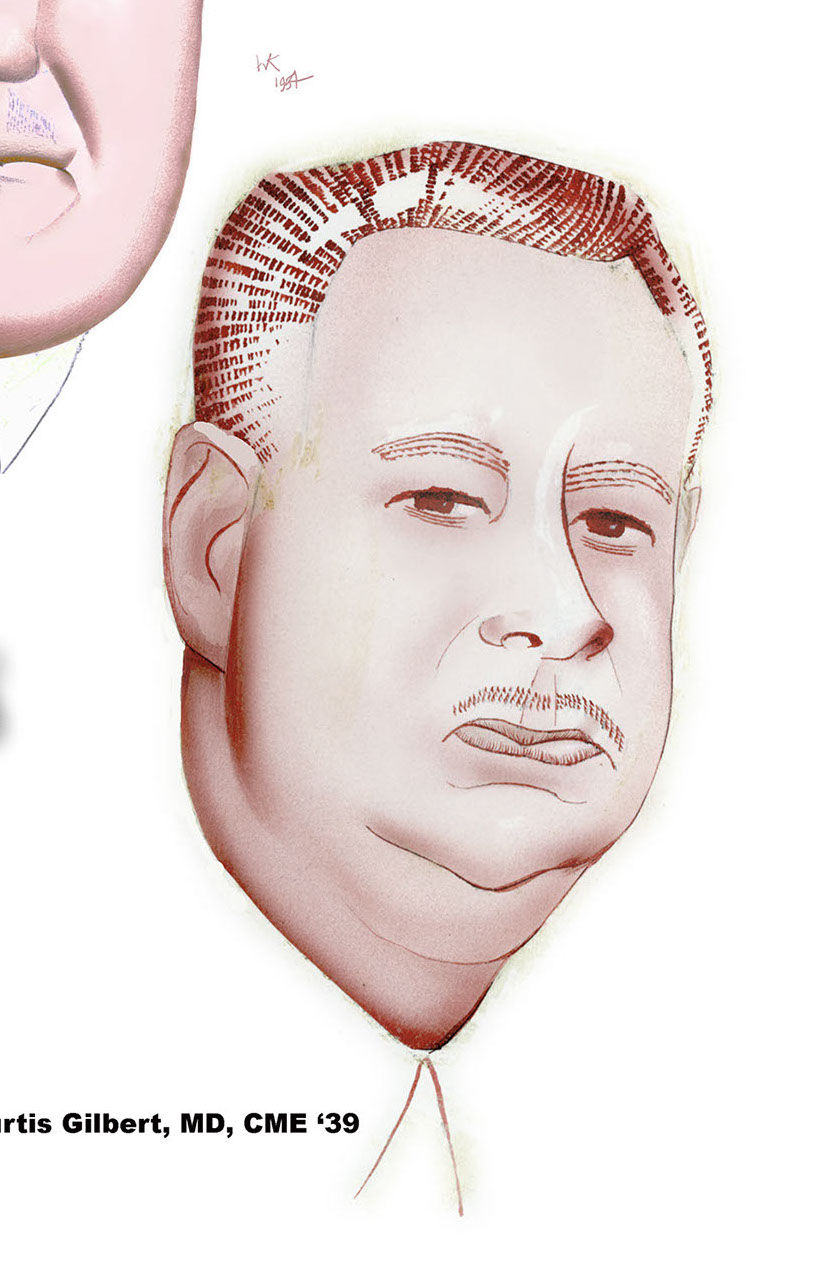On the occasion of an exhibition of old drawings
of the old CME faculty, in the
LLU Alumni Building, 2014
The drawings now on exhibition in the LLU Alumni Building started out, almost 70 years ago, as simply doodlings, doodlings cluttering my lecture notes when I was a 19-year-old freshman medical student in 1948.
Our anatomy instructor happened to catch me at it. Rather than fail me he wanted to exhibit them, of all things. But I knew they were merely happy sketches, not ready for prime time. So after I'd safely graduated, and was killing time before being called up for duty in the army, I finished up many of them as india ink brush drawings or not altogether respectful caricatures, which the instructor, grinning, taped to the doors of cabinets in the back hall of the Anatomy Building, in 1954. Nobody thought about an “artist’s reception.”
As it turned out, that exhibition represented CME (the College of Medical Evangelists) in its last era, circa 1940-1960. It was soon taken down and seemed lost to history, like CME itself, which became Loma Linda University School of Medicine.
40 years later, in the early 1990s, R. Herber, MD, CME57, famous for his interest in CME/LLU history among so many other things, discovered the cache stashed in an old cardboard box in the bowels of the Alumni Association building. He rescued the drawings and published them as a hardback, Giants of CME.
Now, in 2014, 20 years after publication, 60 years after their first humble exhibition, nearly 70 years after their genesis as doodlings, selected drawings from the original collection, rearranged and tweaked in Photoshop by the old doodler himself, are again exhibited, this time gloriously, twenty 8.5 X 11” framed images hung in the Alumni Association stairwell. They may still be trudging the stairs after I’m gone, ghosts of those who once trod the halls. The LLU campus is littered, like my old notes, with other exhibitions, notably the series of large paintings in the Coleman Pavilion, hopefully meaningful to the university, but this series of simple drawings somehow means more to me personally.
I visit the stairwell gallery. I pause and study each one, in a wholly new way, not as the artist analyzing and critiquing his technique and precocity, as I always heretofore would have. I don’t even see drawings, much less doodlings. I see giants -- dead giants; every last one is dead, and our class that sat before them, most are dead -- and bow my head. And then I grin, as so long ago I would inexplicably do in class, to my classmates' bewilderment,
An art historian would note how dated and derivative these drawings are -- from the days of celebrity caricatures and the “Terry And The Pirates” comic strip (young Kime was in awe of Al Hirschfeld’s Broadway caricatures and Milton Caniff’s virtuoso sable brushwork), when caricature characters had only stick pants and long elf shoes in the perfect ballet “first position.”
giants




















<
>
SLIDE SHOW


